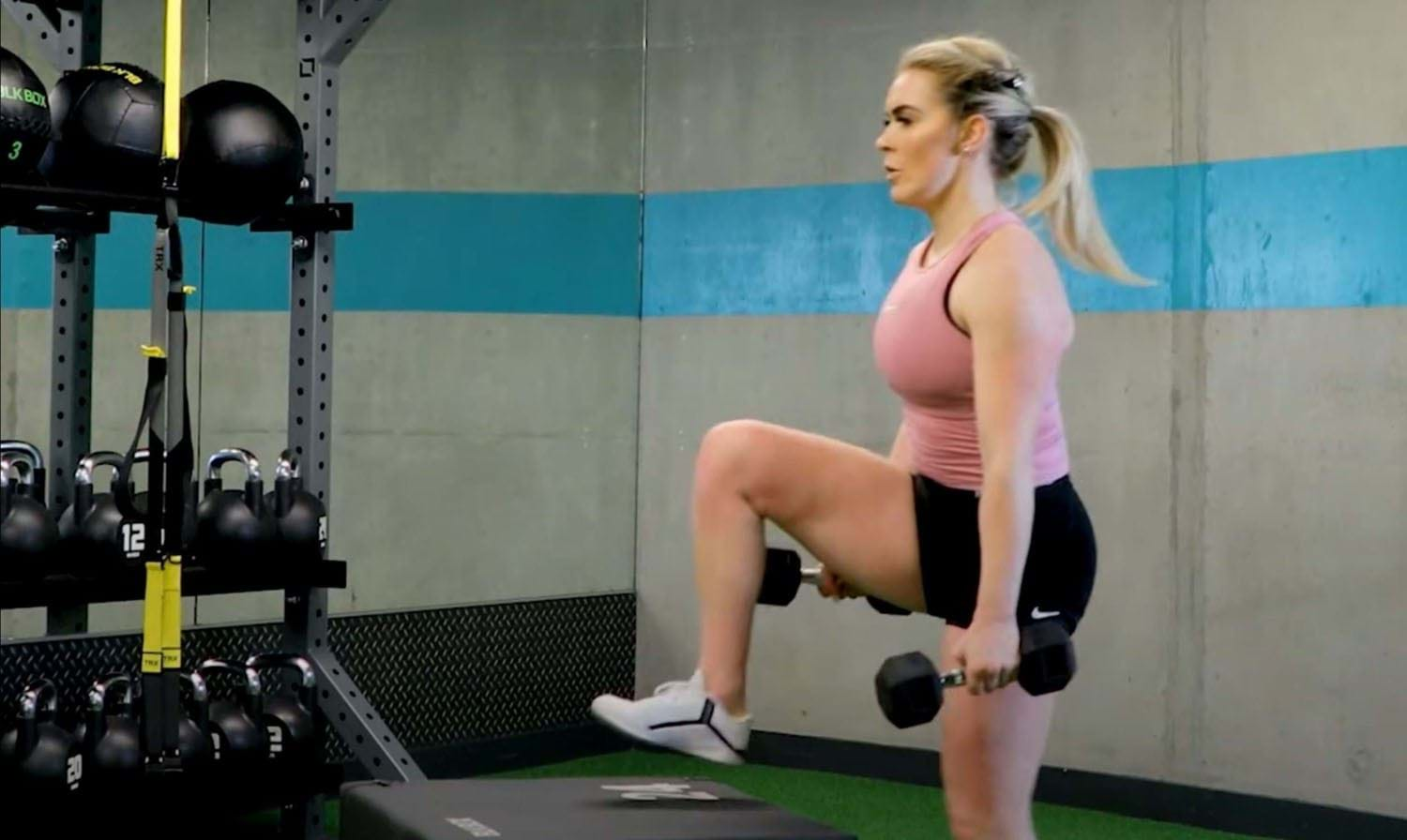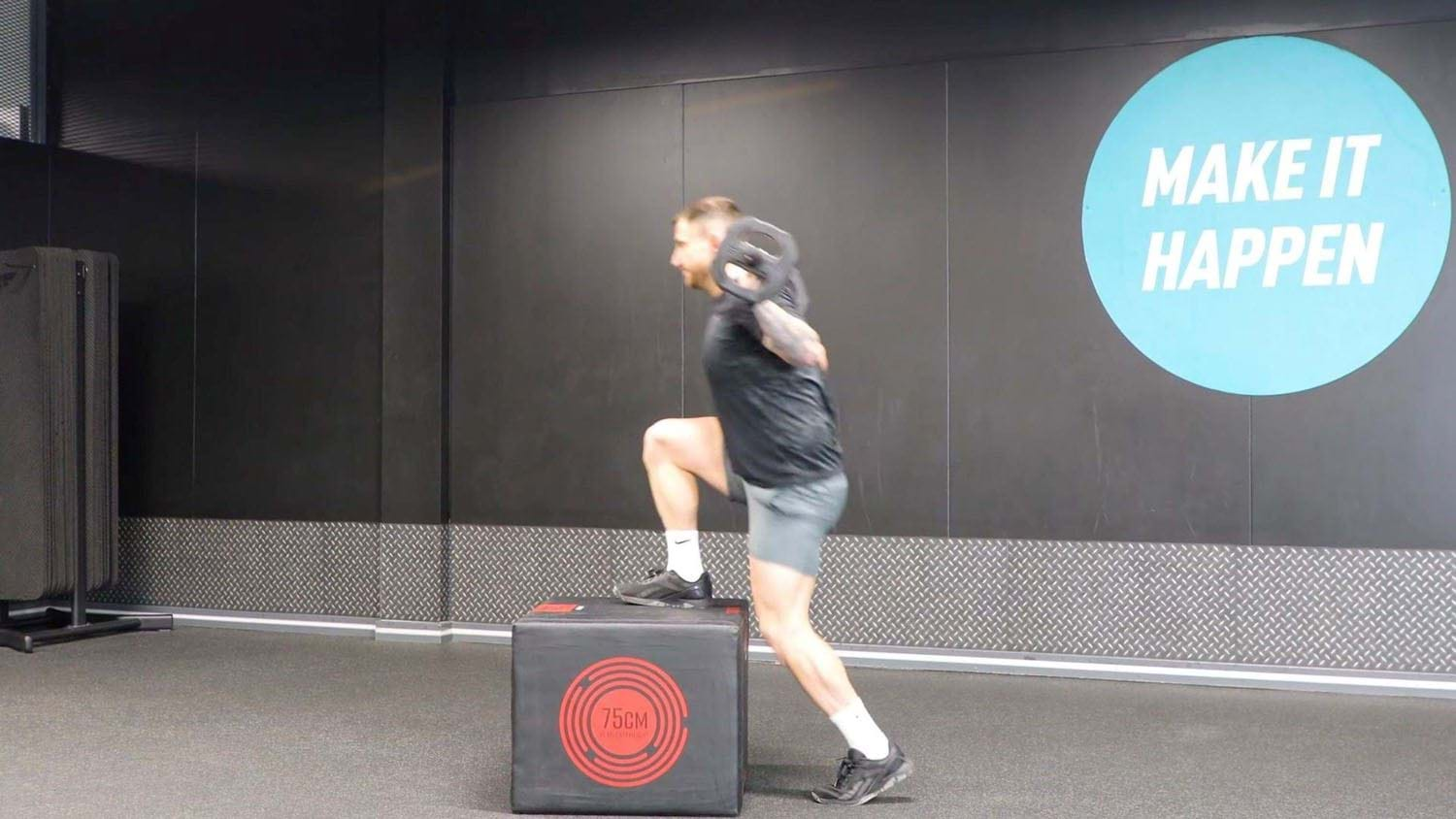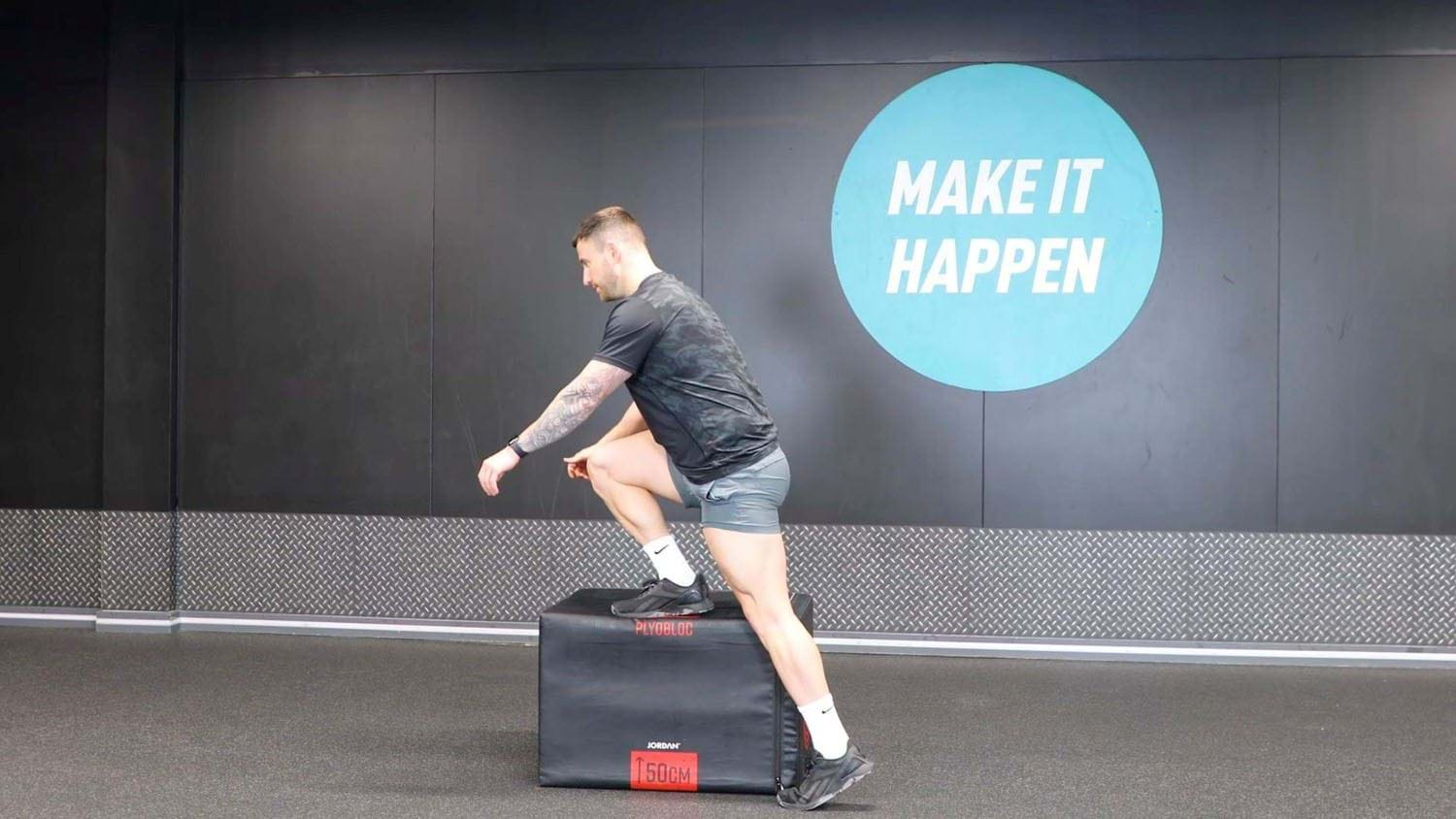Step Ups
What are step ups?

The step up is a lower body compound exercise that involves stepping up onto an elevated surface such as a step or box. Step ups work the glutes, quads, hamstrings, adductors and abductors, calves, and core, and can help to improve stability and reduce muscle imbalances between the two legs.
Step ups can be progressed in two ways: adding weight, or increasing the height of the step. The higher the step, the more focus is placed on the glutes and hamstrings.
Check out our other glute exercises: Hip thrusts, Glute bridges, Glute kickbacks
Commonly asked questions about step ups
Step ups are great for strengthening the muscles in your lower body, as well as improving core strength, balance, and stability. One of the biggest benefits of step ups over compound exercises like squats is that it works the legs unilaterally, which can help to even out any imbalances between the two sides.
Step ups are a strengthening exercise and can help to build muscle in the glutes, quads, and hamstrings if performed regularly, with progressive overload, over time.
Although doing step ups can burn calories, they are unlikely to help with weight loss unless combined with a calorie deficit. Doing strength exercises like step ups can protect against muscle loss while in a calorie deficit, and can even help to build muscle which means you can burn more calories at rest.
Step ups help to build and strengthen the gluteal muscles, which can create a fuller, more toned bum.
Step up tips
- Choose a height that allows you to perform the step up (and down) in a smooth, controlled movement. Once you've nailed the form and built strength, you can increase the height gradually.
- Focus on pushing up through the leg that is on the step, rather than using the leg on the floor to drive the movement.
- When lowering back down off the step, work against gravity to slowly lower yourself down (rather than falling).
Step Up Variations

The barbell step up is a good progression for building strength, power, and muscle mass.

Side step ups mimic the squat more closely and allow the torso to remain upright, which some people find preferable.
If you’re not sure if any of the above exercises are suitable for you, please consult your doctor before you start it. Need guidance on how to perform the exercise? Ask a personal trainer at your gym.